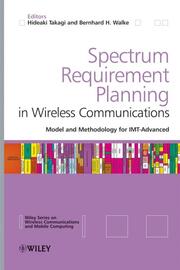Detailansicht
Spectrum Requirement Planning in Wireless Communications
Model and Methodology for IMT-Advanced, Wireless Communications and Mobile Computing
ISBN/EAN: 9780470986479
Umbreit-Nr.: 1940138
Sprache:
Englisch
Umfang: 266 S.
Format in cm: 2.3 x 25 x 17.5
Einband:
gebundenes Buch
Erschienen am 11.04.2008
Auflage: 1/2008
€ 139,00
(inklusive MwSt.)
Nachfragen
